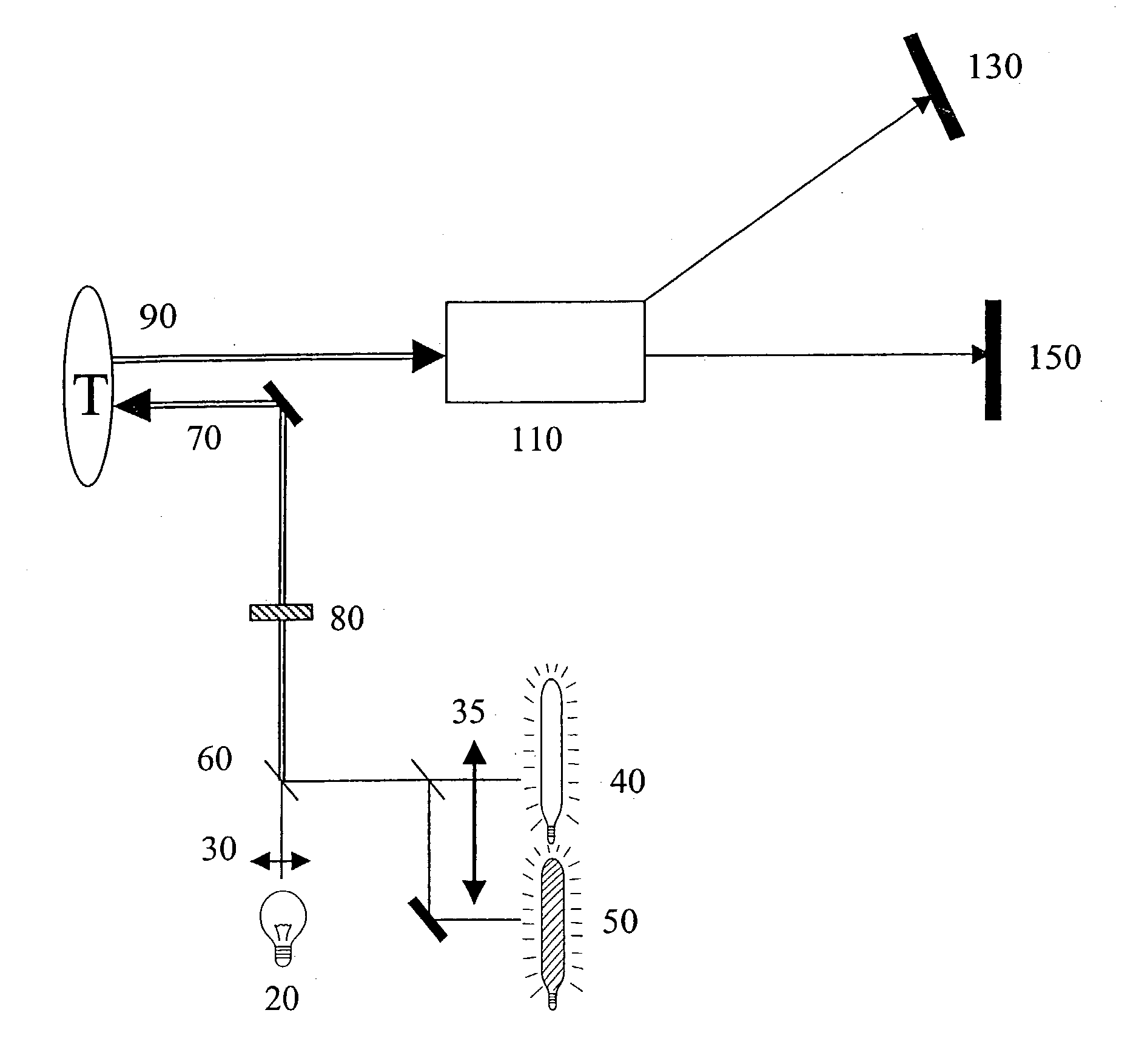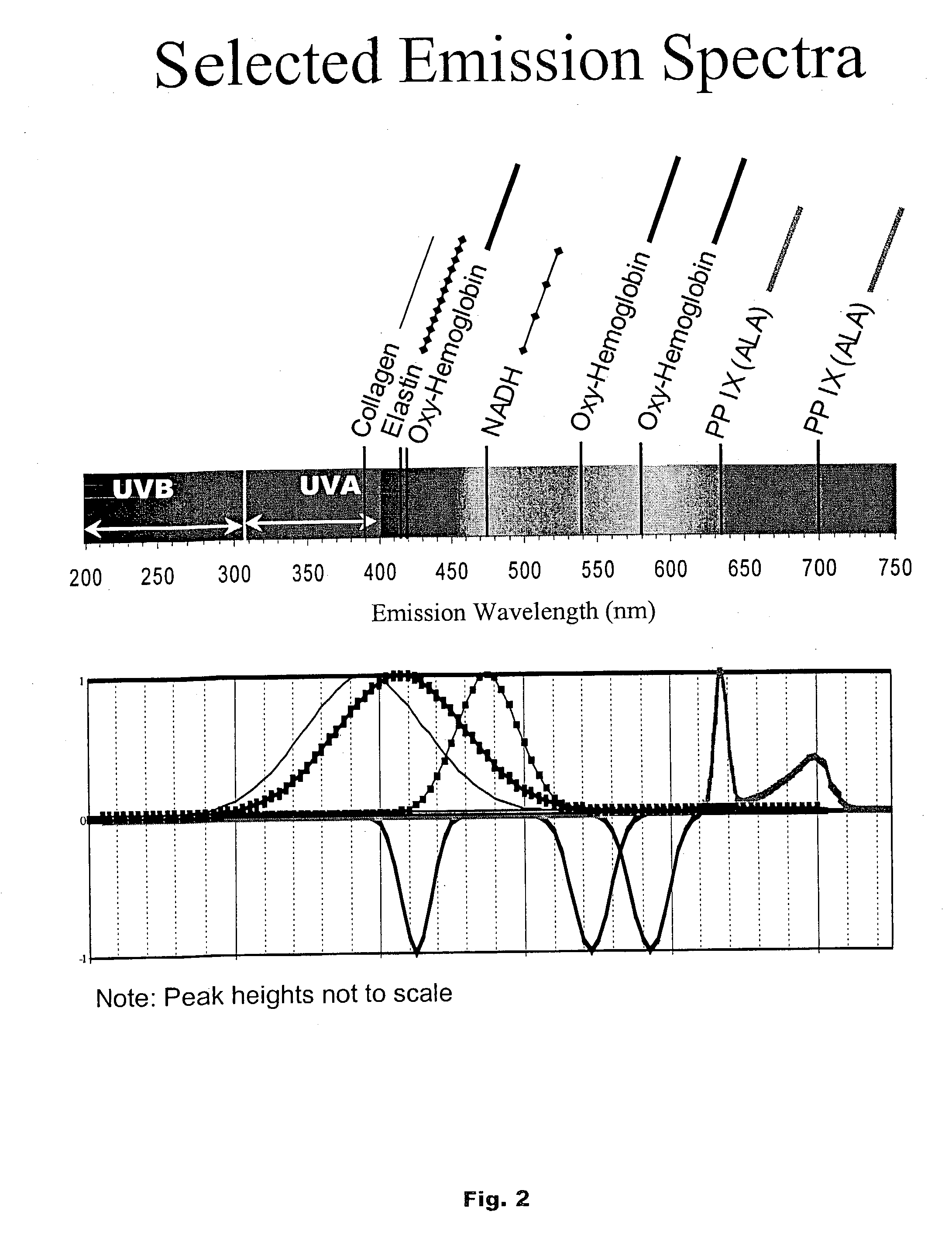Dual mode real-time screening and rapid full-area, selective-spectral, remote imaging and analysis device and process
a real-time screening and remote imaging technology, applied in the direction of spectroscopy, catheters, instruments, etc., can solve the problems of more difficult detection of flat polyps (sessile villous adenomas), increased risk of anesthesia, and increased scan time, so as to avoid the delay of analyzing areas and scan quickly
- Summary
- Abstract
- Description
- Claims
- Application Information
AI Technical Summary
Benefits of technology
Problems solved by technology
Method used
Image
Examples
Embodiment Construction
[0063] While this invention is illustrated and described with respect to a presently preferred best mode with respect to screening and analysis of the intestine, devices according to this invention may be in many different configurations, forms, and materials, and applied to screening and analysis of other tissues, organs, materials and objects. The best mode disclosed herein is an exemplification of the principles of the invention and the associated functional specifications of the materials for its construction, and is not intended to limit the invention to the illustrated best mode. Those persons skilled in the art will envision many other possible variations within the scope of the present invention.
[0064] The presently preferred best mode for carrying out the present invention is illustrated by way of example in FIG. 1.
[0065] Referring to FIG. 1, the device includes an imaging light source 20 preferably emitting approximately spectrally flat broadband visible white light from U...
PUM
 Login to View More
Login to View More Abstract
Description
Claims
Application Information
 Login to View More
Login to View More - R&D
- Intellectual Property
- Life Sciences
- Materials
- Tech Scout
- Unparalleled Data Quality
- Higher Quality Content
- 60% Fewer Hallucinations
Browse by: Latest US Patents, China's latest patents, Technical Efficacy Thesaurus, Application Domain, Technology Topic, Popular Technical Reports.
© 2025 PatSnap. All rights reserved.Legal|Privacy policy|Modern Slavery Act Transparency Statement|Sitemap|About US| Contact US: help@patsnap.com



